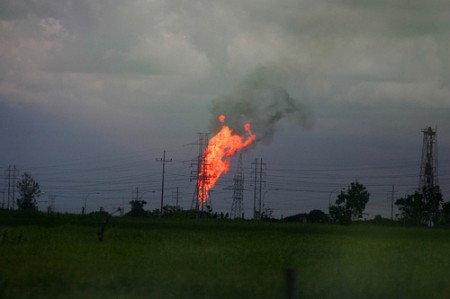
“Peru provides a dramatic example of a growing trend across Latin America where indigenous groups are challenging governments’ economic development programs by raising their voices against extractive industries,” Patricia Vasquez argues in USIP Peace Brief 19.
Across Latin America, economic growth is happening at a steady clip. Similar to many countries in Africa, sustained growth is spurred by a demand for commodities – think oil, iron, ore, copper, gas, etc. – needed to feed burgeoning economies, especially those in Asia. Indeed, such growth is counter to the trends happening in other parts of the globe where countries, in particular the United States and members of the EU, continue to grapple with economic contraction that has brought about hard policy decisions in the form of bailouts, stimulus packages, and cuts to social programs. In fact, a recent article in the New York Times noted how this trend has not only surprised analysts but also “surpassed the expectations of many [Latin American] governments themselves.”
Narrowing the focus to Peru, the country I am currently traveling through, the growth is palatable. Though great economic disparities exist and poverty is pronounced one can’t help but feel a buzz in the air – one aided and sustained by the development of Peru’s hydrocarbon areas and plans for expansion in the oil and natural gas sector (ONG). In 2009, as Peru’s GDP experienced over five percent growth, multinational oil and gas companies poured $800 million into the economy – making up for 50 percent of the nations tax revenues. A viable future in liquefied natural gas (LNG) production ensures that another $1 billion will be invested in the next few years.
This is pretty good news. However, a closer look reveals a situation where Peru’s economic growth is being driven by an expanding ONG sector that aims to carry out extraction activities in largely unexplored and historically protected areas of the Amazon jungle where indigenous tribes live. Further complicating matters, the government has begun doling out rights to the land to foreign oil companies without consulting the indigenous communities.
Consequently, within the last two years demonstrations and social conflicts have sprung up. In Iquitos, a large city in northern Peru that is only accessible by boat and plane, communities stage demonstrations on a regular basis and demand that their rights are taken into consideration in future oil and gas projects. Thus, as someone who examines conflict in ONG producing regions – and in particular the targeting behaviors of violent non-state actors in these areas – I can’t but wonder if Peru will meet a similar fate that so many other oil and gas producing countries have encountered – a future where oil revenues are poorly managed, extraction activities are not regulated and the indigenous land where extraction takes place suffers from environmental degradation and unrealized development.
Such factors can contribute to a host of grievances that can then manifest in violent conflict. Walking the streets of Iquitos I wonder if this country will meet a similar fate as Colombia, Mexico, Iraq, Pakistan, Nigeria, India and many other countries across the globe that have become the staging ground for violent conflict where the energy sector has been a key target for both criminal and political objectives.
The potential is certainly there.

